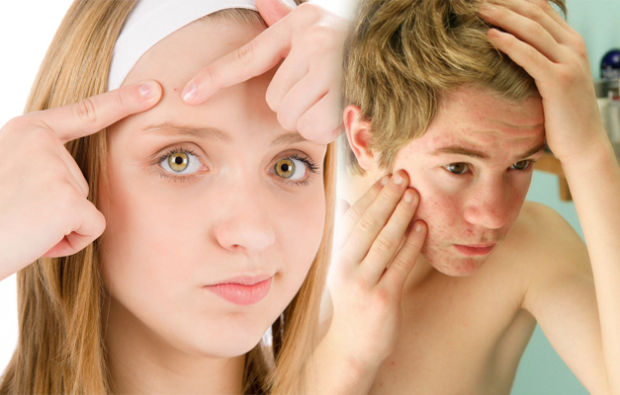PubertyIt is an intermediate point and a transitional phase between childhood and adulthood. In this period, where adult thoughts and discourses are added to childish attitudes and behaviors, being socially accepted, being liked by people, and being a member of a group are vital issues. During this period, while young people experience emotional and social fluctuations, some sexual and physical differences occur.
During adolescence, young individuals begin to search for identity. For this reason, entering into different searches and making new discoveries are characteristics of this period. Young individuals who take the first step towards independence and separation from their parents may sometimes experience conflict with their families on this issue. Although the puberty period is generally considered to be between the ages of 12-21, the onset of puberty in girls may be between the ages of 8-13, while development in boys is observed a few years later than in girls.
Adolescence is generally examined in three stages.
- Stage Early Adolescence: In this stage, which covers the period between the ages of 12 and 14, physical changes occur. Sudden body changes and disproportionate arm and leg growth are observed. Emotional fluctuations are largely present. It is the phase where the identity of girl and boy is adopted and sexual identity comes to light.
- Stage Middle Adolescence: In this stage between the ages of 15-18, the impulses of young people come to the fore and they may have to face many problems. The need for energy and food increases during this period.
- Stage Late Adolescence: The period between 18-20 is the last stage of adolescence. During this phase, the young person experiences psychological and social developments. At the end of this stage, the young person is expected to develop an identity for himself.
ADOLESCENCE SYMPTOMS
During this period, girls and boys develop in different ways and at different ages. Individuals form their own identities as a result of physical, sexual and psychosocial changes. These changes may be affected by race, socioeconomic level, genetics and climate conditions.
Physical and Sexual Changes
Physical changes for girls:
During this period, girls begin to develop features that resemble the female body form. Breast budding, hair growth in the genital area, legs and armpits, and finally menstrual bleeding occur. It is important to provide information about menstruation in order to prevent fear in girls and to normalize the situation. Therefore, this issue will be touched upon in the article.
Physical and sexual changes for boys:
In this period, around the age of 13, men experience deepening of their voice, darkening and hairiness in the genital area, and enlargement of penis size. The beginning of sperm production also occurs during this period. Weight and height increase is observed, acne and hair growth begins on the face.
Psychosocial Changes
Psychosocial changes for girls:
During this period, girls generally examine their bodies to a great extent and criticize themselves to a great extent. The desire to be liked by those around them and the desire to be socially accepted are at the forefront. Their friends' opinions are more important than their parents' opinions. Being excluded from the group or being disliked can lead to dangerous consequences such as suicide. For this reason, it is a period that needs to be paid close attention and given importance by parents.
Psychosocial changes for boys:
During this period, boys generally need to be group leaders and show themselves. Differences such as height growth, voice deepening, weight and stature increase cause some children to be superior to other children, and other children may crumble under pressure. For this reason, parents should not show an oppressive and questioning attitude towards their children, and should be understanding of sudden outbursts of anger; It is very important to show that you understand children's feelings and care about them.
What is the menstrual cycle in girls?
Although it is scientifically accepted that the first menstrual period in girls begins between the ages of 12-15, different socioeconomic levels, races, etc. Due to the conditions, it can be seen from the age of 8. In fact, the onset of menstruation is related to bone age rather than calendar age. In girls, menstruation occurs when the bone age reaches 10. Usually, before menstruation, signals such as abdominal, waist and back pain, breast swelling, and being psychologically tense or touchy may occur.
Although bleeding time lasts between 2-7 days on average, it can vary depending on the characteristics of the person. It takes place in a cycle. This cycle is a cycle that occurs every 28 days on average, but each person's cycle may vary among themselves. Usually for a person the cycle becomes regular between the ages of 25-39. Between the ages of 40 and 45, this order begins to deteriorate and eventually the bleeding stops, called menopause, occurs.
Why might puberty occur earlier than expected?
The onset of puberty may occur earlier than age 8 for various reasons. Possible reasons for this are;
- genetic factors
- hormonal factors
- being overweight
- Disorders in the endocrine system
- Occurrence of stressful situations such as parental separation
In such cases, endocrinology doctors should be consulted. For situations that cause high stress, it would be beneficial to see a psychologist who is an expert in his field.
When and how should the changes that occur during adolescence and menstruation be explained?
Girls' menstrual cycle, which is a part of their natural development, can cause anxiety and fear when it is not explained well. For this reason, it is important to be informed so that they can get through this period in a healthy way. If no information has been provided and bleeding has occurred, it is necessary to explain this. For this reason, explanations will be made to answer the questions that families have in mind.
- From whom should we learn this information? Isn't it possible to learn it in school education?
It is healthier for him to learn from an adult he trusts and is comfortable with. However, the training given in schools is also useful for people to understand that this incident is not just happening to them and that it is a normal situation.
- Should the mother or the father tell this information?
In such cases, it would be more useful to talk to an adult who has been through such a situation before, as he/she may think that he/she will be better understood. However, it is also important that communication with the mother is not problematic.
- When should this information be transferred?
Eating habits etc. As a result of many changes, menstruation has started to occur at earlier ages than before. For this reason, it is important to explain the changes that will occur in your body at the age of 6-7 and also mention bleeding.
- How will it be explained and what should be taken into consideration?
- Explain that menstruation is a normal cycle of life and that menstruation is a sign of health, not a disease.
- Say that every young girl who enters puberty experiences this and that you yourself are in this situation at that age.
- Introduce the materials he will need during this period.
- Give him permission to ask questions.
Note: During this period, vaginal discharge may also be observed in girls. These white spots may make girls think they are harming themselves. For this reason, it should be stated that there is a spontaneous discharge to keep the genital area clean.



